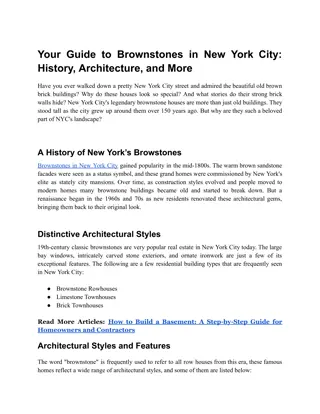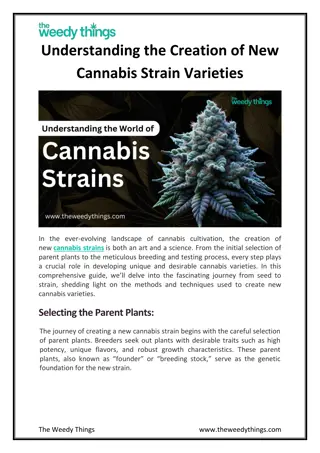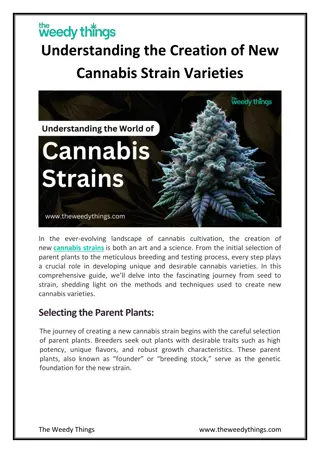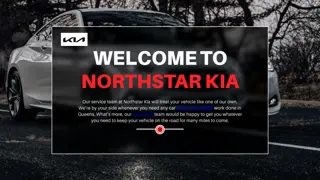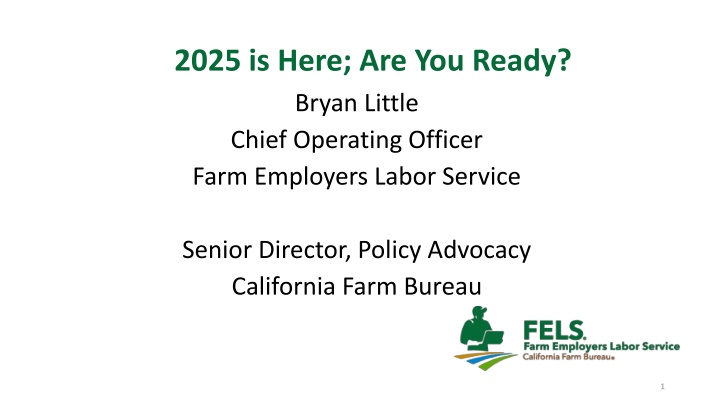
California Farm Bureau's Efforts on Agricultural Overtime and Minimum Wage Regulations
Stay updated on California Farm Bureau's advocacy efforts regarding AB 1066, the implementation stage of agricultural overtime rules, and the minimum wage escalations in California for 2025. Learn about the potential impacts on agricultural employees, legislative actions, and resources available to navigate these changes effectively.
Download Presentation

Please find below an Image/Link to download the presentation.
The content on the website is provided AS IS for your information and personal use only. It may not be sold, licensed, or shared on other websites without obtaining consent from the author. If you encounter any issues during the download, it is possible that the publisher has removed the file from their server.
You are allowed to download the files provided on this website for personal or commercial use, subject to the condition that they are used lawfully. All files are the property of their respective owners.
The content on the website is provided AS IS for your information and personal use only. It may not be sold, licensed, or shared on other websites without obtaining consent from the author.
E N D
Presentation Transcript
2025 is Here; Are You Ready? Bryan Little Chief Operating Officer Farm Employers Labor Service Senior Director, Policy Advocacy California Farm Bureau 1
Ag Overtime & California Minimum Wage January 1: Final stage implementation of AB 1066 (2015) ag overtime rules. All ag employers must pay employees overtime after 8 hours in a workday or 40 hours in a workweek Pre-2015 law recognized that agriculture in inherently seasonal and that employees need to work and earn when work is available or not at all Ag advocacy organizations like California Farm Bureau warned lawmakers the result would be less work and lower earnings for ag employees thanks to AB 1066, agricultural employees are working less and earning less. CAFB is working in the new Legislature to encourage legislators to address this effect by allowing ag employers a tax credit to defray the cost of of ag overtime (the half in time-and-a-half ) Be ready to contact your legislators if we can get this to move! Stay tuned to see if our efforts are successful 2
Ag Overtime & California Minimum Wage FELS/CAFB Resources: Increases in Minimum Wage, Increases in Minimum Salary of Exempt Executive, Administrative or Professional Employees, Phase In of Overtime Thresholds for Non-Exempt Agricultural Employees, CAFB website Other Resources: California s Overtime Law for Agricultural Workers: What Happened to Worker Hours and Pay? Alexandra E. Hill, UC Berkely 3
Ag Overtime & California Minimum Wage Breathe a sigh of relief voters didn t pass Proposition 32 in November: $18 per hour minimum wage as of 1/1/35 But California s minimum wage law includes a minimum wage inflation escalator California s minimum wage for 2025 will be $16.50 per hour. Some counties and municipalities local minimum wages will be higher still FELS/CAFB Resources: One Way or Another, The Minimum Wage is Going Up in California on January 1, FELS website Increases in Minimum Wage, Increases in Minimum Salary of Exempt Executive, Administrative or Professional Employees, Phase In of Overtime Thresholds for Non-Exempt Agricultural Employees, CAFB website 4
Whats New from Cal/OSHA? Indoor Heat Illness Prevention Regulation a follow-up on the longstanding outdoor Heat Illness Prevention standard, but much broader scope and lots of recordkeeping Workplace Violence Prevention Program Requirement this is what happens when the Legislature gets into the business of writing occupational safety and health regs, and the result isn t good Autonomous Ag Tractors/Equipment who would have believed the home of Silicon Valley would be the only state to effectively outlaw autonomous tractors? The Seventies called, they want their bell-bottom jeans, sideburns, and furrow-guided tractor reg back 5
How did we get from the Outdoor Heat Illness Prevention (HIP) Standard to the Indoor Heat Illness Standard? 2005: a rash of deaths among outdoor employes prompted the adoption of the nation s first Outdoor Heat Illness Prevention (HIP) standard for outdoor employees only 2016: California Legislature passes SB 1167 mandating Cal/OSHA to propose to the Standards Board an indoor heat illness prevention standard by January 1, 2019 2023: Several years and six drafts later, the Cal/OSHA proposed an Indoor Heat standard 2024: After one false start when the Board and agency mishandled required cost analysis for the proposed reg, the Board approved the regulation in June, effective in July 6
How is the new Indoor Standard distinct from the Outdoor HIP Standard? Outdoor HIP standard covers outdoor employees, but only in agriculture, construction, landscaping, oil and gas extraction, and transportation or delivery of agricultural products, construction material or other heavy goods The new Indoor Standard covers all indoor workplaces: Indoor = a space under a ceiling or overhead covering that restricts airflow, enclosed along its entire perimeter by walls, doors, windows, dividers, or other physical barrier that restricts airflow, whether open or closed Does not include cool-down areas for outdoor HIP standard compliance Temp 82 F, except for incidental exposure above 82 F but below 95 F for less than 15 minutes in an hour, except: Vehicles lacking functioning/effective air conditions Shipping/Intermodal containers during loading/unloading 7
Basic Requirements of the New Indoor Heat Standard Written Program: detailing procedures for accessing water and cool-down areas, hazard assessment control measures, acclimatization, and emergency response Training: for employees and supervisors Cool-Down Areas: indoor or outdoor space maintained below 82 F, blocked for sunlight and radiant heat sources to the extent feasible, open to the air or provided with ventilation or cooling Rest Periods: allow and encourage employees to take preventative cool-down rest periods and monitor for heat illness symptoms Acclimatization: closely observe new employees for 14 days, all employees during a heat wave if no engineering controls are present 8
Basic Requirements of the New Indoor Heat Standard Requires access to water and cool-down areas at all time when temperature exceeds 82 F Measurement & recording of temperature and heat index (whichever is higher) including date, time, location at times when employee exposures are expected to be greatest; Repeat measurement when temperature reasonably expected to be 10 F + greater You can assume your worksite will exceed 82 F and obviate recording temps/heat index 9
Basic Requirements of the New Indoor Heat Standard Use feasible engineering controls to lower the temperature to below 87 F where employees are present, or below 82 F where employees wear clothing that restricts heat removal Use feasible administrative controls or personal protective equipment to reduce risk of heat exposure where engineering controls are infeasible Default to PPE where neither engineering controls nor administrative controls can adequately protect against heat hazards Create and maintain emergency response and employee monitoring procedures Implement response procedures when employees exhibit signs of heat illness Create and implement (when appropriate) procedures for close observation during 14-day acclimatization period or a heat wave (when the temperature exceeds 80 F and 10 hotter than the average for the five prior days) 10
A Discussion about Feasibility & Controls When are engineering controls feasible ? What the @#%*does feasible mean? How do you know when administrative controls are adequately protective ? Can you go straight to PPE? When? 11
Employer Compliance Resources Cal/OSHA Heat Illness Prevention Guidance and Resources webpage with side-by-side comparison of the two standards Indoor Heat Illness Prevention webpage Indoor Heat Illness Prevention Educational Materials and Other Resources webpage Frequently Asked Questions Related to Indoor Heat Illness Prevention Heat Illness Prevention in Indoor Workplace Information for Employers Heat Illness Prevention in Indoor Workplaces Information for Workers Outdoor Heat Illness Prevention Educational Materials and Other Resources webpage Frequently Asked Questions Related to Outdoor Heat Illness Prevention 12
SB 553 (Cortese) Workplace Violence Prevention Plan Requirement How Did We Get Here? Unions began advocating for employer mandates on workplace violence in the early 2000s; unions representing psychiatric hospital employees, then unions seeking to unionize retail employees Picked up momentum as violent crime became a greater concern in recent years SB 503 (1993) required hospitals to create and implement violence plans; SB 1299 (2014) expanded that to healthcare employers generally Cal/OSHA implemented a workplace violence standard for healthcare employers in 2017 Discussions with stakeholders on a general industry workplace violence standard began around that time SB 553 passed in 2023 13
SB 553 (Cortese) Workplace Violence Prevention Plan Requirement Virtually all employers required to establish, implement and maintain an effective Workplace Violence Prevention Plan by July 1, 2024, except: Facilities covered by Healthcare WPV; Facilities covered by Dept. of Corrections & Rehabilitation Law Enforcement agencies Employees working remotely Workplaces not publicly accessible, 10 or fewer employees, in compliance with IIPP 14
SB 553 (Cortese) Workplace Violence Prevention Plan Requirement Workplace violence: any act of violence or threat of violence that occurs in a place of employment; includes, not limited to: Threat or use of physical force resulting in, or having a high likelihood of resulting in, injury psychological trauma, or stress (whether or not the employee sustains an injury) Incident involving the threat or use of a firearm or other dangerous weapon, including use of common objects as weapons (regardless of whether the employee sustains an injury) 15
SB 553 (Cortese) Workplace Violence Prevention Plan Requirement Threat of Violence: any verbal or written statement, including texts, electronic messages, social media messages, online posts or any behavioral or physical conduct that conveys or reasonably could be perceived to convey intent to cause or place someone in fear of physical harm, and that serves no legitimate purpose Workplace violence does not include lawful acts of self-defense or defense of others 16
SB 553 (Cortese) Workplace Violence Prevention Plan Requirement Plan Overview: May be part of an IIPP, or established and maintained separately Create and maintain records of workplace violence, hazard identification, evaluation, correction and investigation Violent Incident Log Employee/supervisor training 17
SB 553 (Cortese) Workplace Violence Prevention Plan Requirement Plan Overview: Develop and implement a workplace violence prevention plan Provide employee training programs Prohibit employee retaliation Accept and respond to reports of workplace violence Maintain a Violent Incident Log Requires Cal/OSHA to proposed additional requirements 18
Workplace Violence Prevention Plan Requirement Employer Compliance Resources FELS: Workplace Violence Prevention: FELS Newsletter subscriber-exclusive Resources: Workplace Violence Prevention Plan (.pdf) Hazard Assessment Form (.pdf) Training Topics (.pdf) Violent Incident Log (.pdf) Other: Model Written Workplace Violence Prevention Program (editable, MS Word format), Cal/OSHA Workplace Violence Prevention in Agricultural Operations Employers Fact Sheet, Cal/OSHA Workplace Violence Prevention in Agricultural Operations Employees Fact Sheet, Cal/OSHA Workplace Violence Prevention in General Industry Employers Fact Sheet (includes non-healthcare and agricultural employment), Cal/OSHA Workplace Violence Prevention in General Industry Employees Fact Sheet (includes non-healthcare and agricultural employment), Cal/OSHA FAQ: Workplace Violence Prevention in General Industry (includes non-healthcare and agricultural employment), Cal/OSHA 19
Autonomous Ag Tractors/Equipment Steadily increasing interest/implementation of various degrees of autonomous equipment/remotely-controlled equipment: Vineyard/Orchard Air-Blast Sprayers (Gus, partnering with John Deere); replaces a tractor driver with PPE suite Weeders (Carbon Robotics, various start-up manufacturers), laser burning, scalding-water blast weed cutting, employs various geo-locating and weed v. sprout detection technologies, replaces weeding crews carrying hoes Tractors (Blue White, Monarch, Bear Flag Robotics (partnering with John Deere): geo-locating and obstacle detection technologies like LIDAR, scripted tasks and routes to eliminate the need for a human driver for various tractor tasks Buddy robots (UC Davis Fragile cRop hArvest-aiding mobile robots, or FRAIL bots) to aid humans like strawberry pickers by carrying trays to be tallied 20
Autonomous Ag Tractors/Equipment Cal/OSHA has granted an experimental variance to Monarch in 2022 to allow use for the purpose of gathering data about possible hazards Unfortunately, the variance didn t specify use around human employees (which is Cal/OSHA s jurisdiction) The Cal/OSHA Standards Board has rejected two proposed revisions to its 1974 furrow- guided tractor standard in the last six years, and has even declined to empanel an advisory committee to study the issue Governor Newsom seems to have an interest in addressing the issue; the Standards Board chair he recently appointed has emphasized the issue, and the Board voted to empanel an advisory committee on the topic at its November meeting How fast will that move? Only time will tell 21
Thank You! Bryan Little Farm Employers Labor Service & California Farm Bureau 800-753-9073 blittle@fels.net www.fels.net 916-561-5622 blittle@cfbf.com 22





